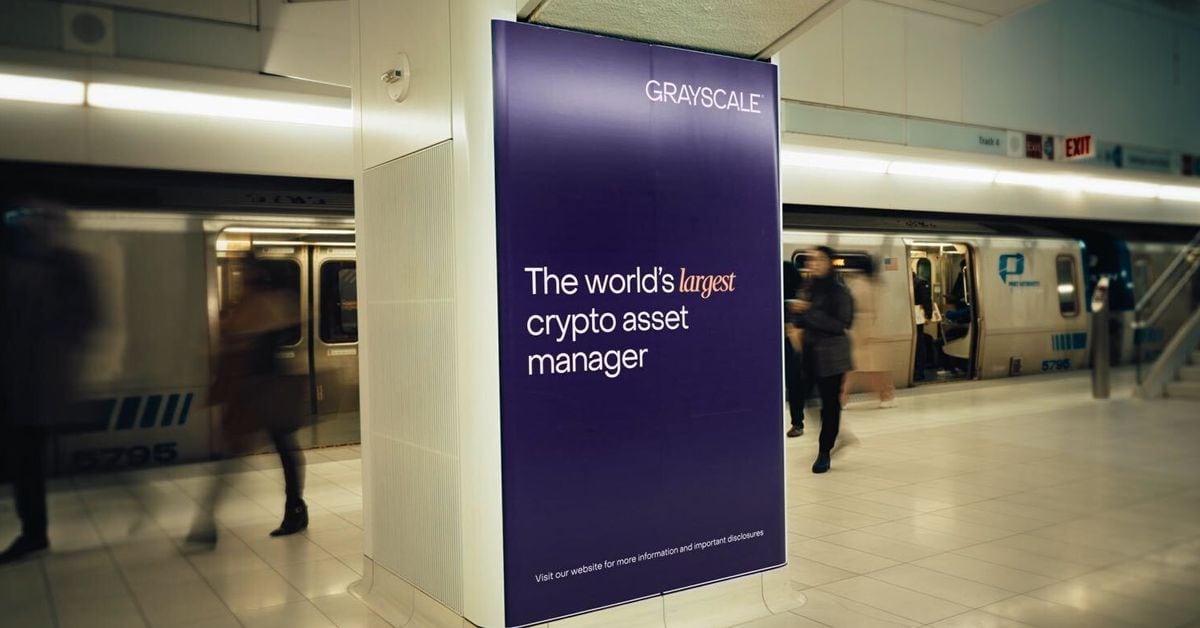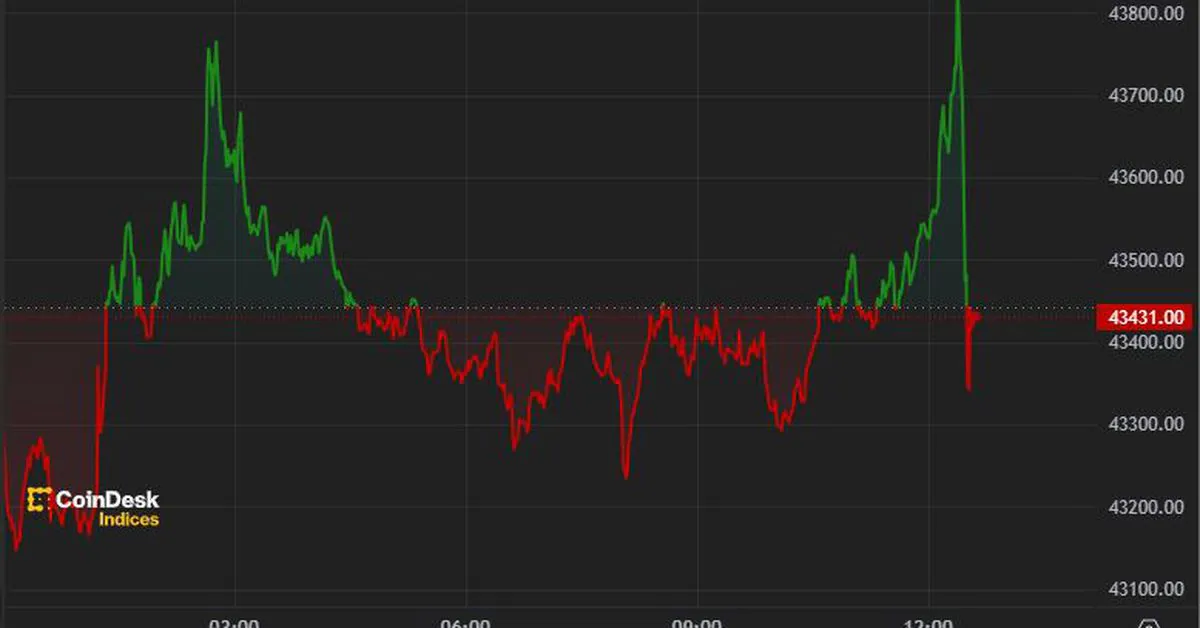PSE Trading A New Paradigm in Asset Issuance, Take Stock of the Bitcoin Metadata Protocol Worth Paying Attention To
PSE Trading A Game-Changing Approach to Asset Issuance and a Must-Watch Development - The Bitcoin Metadata ProtocolThe main differences between different metadata protocols are the different record locations, record formats, and ledger maintenance methods in the blockchain.
Written by: @JohnHol10, PSE Trading Intern
This year, the asset issuance protocols on the Bitcoin blockchain have become the focus of discussion for everyone. These protocols belong to the metadata protocols, which define an asset by recording some information in a Bitcoin transaction. The differences lie in the record location and record format, among other factors, which determine the protocol differences.
1. What are metadata protocols?
A blockchain is a linked list structure with hash pointers, essentially a database maintained by distributed nodes. Satoshi Nakamoto decided to use the blockchain to record transaction data encrypted by elliptic curve functions and hash functions, thus creating Bitcoin. The key point here is that as long as there is a way to record somewhere which address transferred how much of which asset to which address, and it is possible to succinctly verify the legitimate source of the assets, whether the assets have been spent before, and the validity of transaction signatures, then it is possible to create a digital asset.
- GameFi Public Chain Research (Part 2) Layer2 and Optimistic Tracks
- If you plant flowers with all your heart but they don’t bloom, how to solve the anxiety about zkSync derivatives?
- A glance at six Bitcoin wallet interactive tutorials
In the early days of Bitcoin, some people came up with the idea of recording this information in the op_return output. This way, it is possible to inherit the security of Bitcoin and issue new assets directly on the Bitcoin blockchain without the need for a new chain. This was the colored coin protocol, the first metadata protocol in history. Unfortunately, the concept of colored coins was too advanced at the time, and there were doubts about the value of Bitcoin. The more convincing approach at that time was to establish a new blockchain and find a new “ledger” to record asset transfers.
2. BRC-20: Witness Field New Paradigm
In February 2023, the introduction of the Ordinals protocol once again opened up people’s imagination of the Bitcoin ecosystem. The Ordinals protocol gave each satoshi a number according to the order it was mined and defined the owner of the first satoshi of a UTXO containing any arbitrary data recorded in the witness field of a Bitcoin transaction, calling this data the inscription and assigning ownership of all inscriptions.
Since any data can be placed in the witness field, it is natural to put text data containing transaction information in the witness field. This is the BRC-20 series of protocols, which put text data including the protocol version number, operation type, asset name, and transfer quantity in the witness field of a Bitcoin transaction input, thus defining the deployment, inscription, and transfer of a BRC-20 asset.
The BRC-20 protocol has caused a lot of buzz, with its main assets being \(Ordi\) and Sats, among others. \(Ordi is the initial token of the BRC-20 protocol, deployed on March 8th this year. It was fully engraved in less than two days, with a total supply of 21 million. Its market value reached 630 million dollars in May, but it is currently around 410 million dollars.\) The popularity of Ordi has led to the continuous deployment of various BRC-20 assets, with the most representative being Sats, which was deployed on March 9th with a total supply of 21 trillion and fully engraved only on September 24th. At one point, Sats’ market value exceeded $ Ordi, but it is currently around 270 million dollars.
After BRC-20, a series of asset issuance protocols based on Ordinals began to appear, but they do not have any fundamental differences. They all involve putting metadata into the witness field. Their biggest advantage is that they can be freely deployed, openly engraved, easy to understand, and highly transparent. All information is publicly available on the chain, and everyone can see exactly what they are trading on the chain. These features have created a frenzy for BRC-20, with “gamblers” rushing in to deploy or engrave assets they believe will multiply by a large amount.
On the other hand, the issuance of BRC-20 series assets has resulted in very high Bitcoin transaction fees. This is good news for large-scale miners, but for small nodes that maintain the Bitcoin status, the on-chain footprint of the BRC-20 series protocol is significant, and it generates a large number of UTXOs with amounts of 546 satoshis, which significantly increases their operating costs.
Three, Runestone: Retro op_return reappeared
Casey Rodarmor, the founder of the Ordinals protocol, tweeted on September 26th, 2023, proposing a new concept for a metadata asset issuance protocol called Runes (later renamed Runestone). Casey stated that the original intention of the Ordinals protocol was to create a beautiful “art gallery” in Bitcoin, but the madness of BRC-20 is undermining Bitcoin. No one can stop the “gamblers” from participating in gambling, so he proposed building a cleaner concept for a metadata asset issuance protocol. This way, the “gamblers” can continue to gamble without creating a large number of UTXOs and increasing the burden on nodes.
Runstone is a replica of the ancient dyeing coin protocol, which records the metadata that defines assets in the op_return output of a Bitcoin transaction. op_return is a special Bitcoin script opcode, and any instructions after op_return will not be executed. Therefore, UTXOs that include op_return are considered to be unspendable forever, and can be excluded from the UTXO set to reduce node maintenance costs. Therefore, any information can be recorded in the op_return output (which does not need to include Bitcoin), and the on-chain footprint is relatively clean, with a relatively small burden on nodes.
The concept of Runestone has sparked intense discussions, but unfortunately, Runestone has not yet been implemented until today. However, Benny, the founder of TRAC, quickly implemented a similar asset issuance protocol called Pipe Protocol, which is also a metadata asset issuance protocol that stores data in the op_return output. The Pipe protocol inherits Casey’s idea of creating a clean on-chain footprint for asset issuance protocols, while also inheriting the core idea of the BRC-20 protocol, which is deployable and publicly engravable. This is not part of Runestone’s plan, apparently Casey believes that deployability and public engraving are the culprits behind the congestion of the Bitcoin blockchain. Therefore, in Casey’s vision, Runestone will be an asset issuance protocol led by the project party through an airdrop, but the market obviously prefers the deployable and publicly engravable approach.
The initial token \(Pipe was deployed on September 28th with a total supply of 21 million, currently valued at around 30 million US dollars.\) Although Pipe adopts the form of public engraving, it is one of the few tokens that is owned by the project party among many tokens. The TRAC team stated that Pipe will be governed by Tap, and Tap is the initial token of the TAP protocol, which is another asset issuance protocol similar to BRC-20 developed by the TRAC team, and Tap will be governed by $Trac, which is a BRC-20 token.
The biggest shortcoming of protocols like Runestone and Pipe protocol is the limited storage space of op_return. This limitation does not have a significant impact on homogeneous assets, but it clearly restricts non-fungible assets.
Fourth, Taproot Asset Protocol: Achieving significant expansion through on-chain commitments
There have always been attempts to issue assets on the Bitcoin blockchain. For some idealistic cypherpunks, they do not think it is necessary to issue speculative assets for “gamblers” and miners to celebrate. They strive to avoid asset issuance protocols that affect the normal use of the Bitcoin network, so they spend more time developing more complex technologies.
Lightning Labs, the development team behind the Bitcoin Lightning Network, started developing a stablecoin protocol called Taro in April 2022, renamed as Taproot Asset in May 2023, and officially launched the first mainnet version of Taproot Asset on October 19, 2023. Lightning Labs’ vision is to combine the Lightning Network to issue stablecoin assets, enabling global forex trading and replacing fiat-dominated retail payment systems in local areas.
Taproot Asset protocol is also a metadata asset issuance protocol, but Taproot Asset does not store data in the witness fields of transaction inputs or in op_return outputs. In fact, Taproot Asset does not directly store data on the chain. Instead, it commits data to a script path of a P2TR type UTXO. Therefore, from the result, the deployment and transactions of a Taproot Asset almost leave no trace on the chain because to observers, it is just a regular Bitcoin transaction transferring to a Taproot address.
So, is this safe? The answer is yes, because each Taproot Asset transfer requires a Merkle proof for the metadata. If there is a double spend or unexpected change, the resulting root hash value will be different from the expected one and will be rejected.
Due to the technical complexity, there are not many assets currently issued through the Taproot Asset protocol. The most notable one is the Nostr Assets Protocol, which is a Bitcoin ecosystem project that combines the Nostr protocol, Taproot Asset protocol, and the Lightning Network. Its initial tokens are two types: Trick and Treat, each with 210 million tokens. Currently, only 20% has been released through airdrop, and the remaining tokens are held by the Nostr Assets team. Trick and Treat are assets issued through the Taproot Asset protocol, and the Nostr Assets team plans to develop a publicly engraved method for people to freely deploy and engrave Taproot Asset protocol tokens on the project platform.
However, Taproot Asset is not a perfect solution. It is technically complex, which is not conducive for user understanding and trust, and there may be unexpected vulnerabilities. Additionally, the validation cost index of Taproot Asset is increasing, which is a significant cost for both users and third-party institutions. Most importantly, Taproot Asset does not store metadata on the chain, so users need to locally save the metadata or entrust Universe, a third-party-like institution, to store this data.
5. BRC-20 Wave, Runestone & Taproot Asset: What are the Pros and Cons?
BRC-20 Series vs. Runestone Series
1. The biggest advantage and disadvantage of the Runestone series protocol compared to the BRC-20 series is its heavy on-chain footprint. BRC-20 generates a large number of abandoned UTXOs because the protocol adopts an account model to maintain the ledger. It needs to track how many assets each “account” holds, so each transfer made by the holder requires the notation “Transfer” to specify the amount that needs to be transferred to the target address. On the other hand, the Runestone series protocol maintains the ledger using a UTXO model similar to Bitcoin, where the amount transferred to the target address and the change amount for oneself are recorded. This design has two advantages. First, it greatly reduces the on-chain footprint and the pollution of the Bitcoin chain caused by asset issuance protocols. Second, it reduces the cost and simplifies the operation of maintaining the ledger for off-chain indexers.
2. The Runestone series protocol is more conducive to large-scale airdrop issuance. This may not be what “gamblers” want to see, but it may be what institutional investors would like to see. However, this is not absolute. For example, the Pipe protocol also supports the open notation form that “gamblers” like.
3. The BRC-20 series has greater storage space. The BRC-20 series based on the Ordinals protocol stores data in the witness field of transaction inputs, and this information can enjoy the SegWit discount. Therefore, theoretically, as long as the data put in the witness field is large enough, a transaction close to 4MB in size can be created (the largest Ordinals NFT has a size of 3.94MB, almost occupying the entire block). With the introduction of recursive notation technology, larger non-fungible assets can also be created. In contrast, the Runestone series will face a limit of op_return80KB, which greatly restricts the issuance of non-fungible assets through them. Even when issuing fungible assets, transactions of too large a scale cannot be released at once.
Taproot Asset Protocol vs. the Previous Two Series
The complex design of the Taproot Asset is aimed at reducing on-chain footprint and being compatible with the Lightning Network. As an open-source protocol, it will be hyped up by “gamblers” whenever possible. Therefore, we will only compare the Taproot Asset protocol with the previous two series on this level.
1. Similar to the previous two series, Taproot Asset also requires the introduction of third-party trust. The previous two series require trust in off-chain indexes, while Taproot Asset requires trust in the Universe that stores and verifies metadata. But there are differences. The data structure of Taproot Asset design ensures the simplicity and reliability of Universe verification. However, considering the complexity of Taproot Asset leading to user difficulty in understanding and trusting, there is still uncertainty in the verification cost of Universe. Moreover, there has been a significant investment in the construction of off-chain indexes for the BRC-20 series. Therefore, it can be speculated that in the short term, due to slow construction and slow user acceptance, the comprehensive cost of Taproot Asset Universe is higher. However, in the long term, the comprehensive cost of Taproot Asset Universe may be lower than that of the BRC-20 series.
2. Lightning Labs paved the way for Taproot Asset to access the Lightning Network by addressing the technical details. This is the biggest advantage of the Taproot Asset protocol compared to the previous two series. Taproot Assets can be traded on the Lightning Network, further reducing their on-chain footprint. This prevents the increase of Bitcoin network fees and allows traders to avoid high transaction costs. On the other hand, the current BRC-20 series leads to expensive Bitcoin network fees, and when users trade BRC-20 assets, they may incur transaction fees of over $10 due to fragmented UTXOs in their wallets.
3. Similar to the Runstone series, the Taproot Asset protocol is also advantageous for large-scale airdrop issuance. However, it’s not absolute. For example, the Nostr Asset Protocol promises to support public engraving.
4. However, when it comes to issuing non-fungible assets, the Taproot Asset protocol is not as capable as the previous two series and the Ordinals protocol. As acknowledged by Musk, the previous two series and Ordinals protocols write data onto the blockchain, where each pixel of each image is written. On the other hand, non-fungible assets issued through Taproot Asset only promise to be on-chain, while the actual data is stored locally or in the Universe. If data loss occurs for any reason, the promised hash value on the chain will become meaningless.
VI. Conclusion
The main differences between different metadata protocols lie in the location and method of data recording in the blockchain, as well as the maintenance of account books. These differences determine the characteristics of different protocols. Protocols that record data in witness fields, such as the BRC-20 series protocol, have ample data space but leave a heavy on-chain footprint and generate a significant amount of abandoned UTXOs, which burdens nodes. Protocols that record data in op_return, such as the Runstone or Pipe protocols, have made improvements in this regard. The Taproot Asset protocol, which commits data to be on-chain, has the cleanest on-chain footprint, but its technical complexity makes it less user-friendly and less conducive to user understanding and trust.
We will continue to update Blocking; if you have any questions or suggestions, please contact us!
Was this article helpful?
93 out of 132 found this helpful
Related articles
- LianGuai Daily | Former FTX executives join forces to create new crypto exchange; stablecoin protocol Raft is developing a recovery plan to compensate customers.
- CME Bitcoin futures surpass Binance for the first time, why is it a milestone moment for the cryptocurrency market?
- Understanding Hong Kong’s New STO Regulations in One Article Circular on Intermediaries Engaging in Tokenized Securities Activities
- Looking at Decentralized Orderings from the RaaS Platform
- The Crypto Chronicles: A Tale of Two Frauds
- Bitcoin Soars to New Heights: A Comic Twist on Digital Assets
- DeFi’s Automated Market Makers Can Everyday Traders Bank on Trust?


















